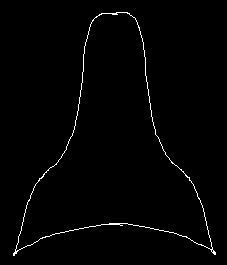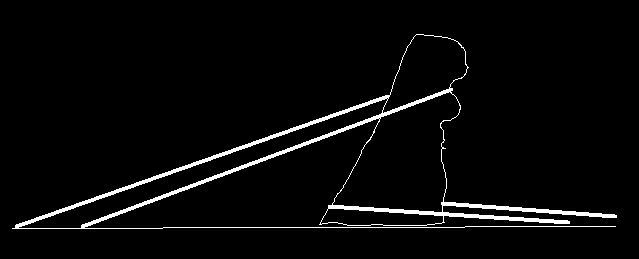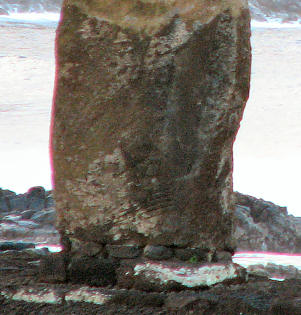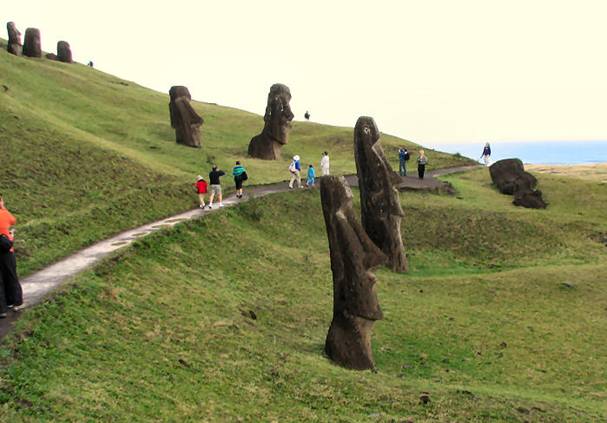Easter Island: How the Moai “walked” to their locations.
By Howard C. Anderson
On 11 July 2010, we visited Easter Island for the total solar eclipse. As part of that expedition, we were given a guided tour of the island and the statues or Moai found there. The guide, professor at a Chilean university, whose name I unfortunately did not get and cannot locate, has lived on the island for over 20 years and has been studying the Moai all of that time. His wife is one of the original Easter Islanders.
The guide said that the statues have nothing to do with religion. They are not “gods” or representations of “gods” but instead are statues of islanders highly revered by the others living on the island; more like “saints” than gods. The Moai are found along the coast and they face inward rather than outward.
The Moai resulted from friendly competition between various tribes living together on the island. The competition led to seeing who could create the biggest and the best Moai.
Estimates are that 20,000 people lived on the island at the time the Moai were constructed. Over time, the islanders inadvertently degraded their environment until, in the 1700’s they were in dire straits and beginning to starve. Raiding became common and the Moai were pushed over by these competing, starving groups during the raids. None of the statues were left standing.
Since that time, some of them have been restored to their standing positions.
The Moai were carved out in a quarry on the side of the Rano Raraku volcano. They were carved as completely as possible before they were removed from the quarry. The guide said that this is the only known quarry in the world where carvings were done in the quarry. Everywhere else, rectangular blocks are removed from the quarry then carved elsewhere.
One of the unfinished Moai is on its back facing upwards. The carving would have been completed by undercutting the Moai. This would have left a ridge on its back. The Moai would have then been slid downhill into a hole dug in the ground so that it would be in an upright position. They would then finish the carving of the back. When ready to move the Moai, they would dig out the downhill side of the hole…
The guide noted that the base of each Moai is larger than the shoulders. The base is also not flat. It is curved so that the left and right sides are longer as if it could sit astride a cylinder.


The Moai are also leaning forward about 20 degrees so they are almost ready to fall on their faces if they are on a level place…
Many years ago, when the islanders were asked by westerners how the Moai got to their locations they said “They walked.”
The guide pondered these facts for 20 years.
He has concluded that the Moai actually were “walked” to their locations in an upright position. He said if you were going to move a heavy refrigerator, you probably could not push it. You wouldn’t tip it over onto its side. You would “walk” it to where you wanted it by shoving it from side to side. He believes the Moai were designed to be “walked” to their locations.
- Loop a long rope up high on the Moai and have two teams of people pulling on those ropes to keep the Moai from tipping over and falling on its face.
- Loop a long rope down low on the Moai and have two teams of people pulling on those ropes. These guys alternately pull harder on one side then the other to cause the Moai to “walk”.
The concave base helps in this process because the left and right sides will provide more traction than if the base were flat. A flat based Moai might move from side to side but not make any forward progress.
The 20 degree forward lean also contributes to getting the Moai to move forward…


When a Moai arrives at its coastal location, the front side of the Moai will be elevated by rocks so that the Moai will no longer tilt forward. This is easily seen here:

Some of the Moai weigh up to 80 tons. That is 160,000 pounds.
Our guide said he had employed some students to test the “walking” theory and they were able to achieve about 20 meters per hour with the ropes.
I asked the guide if he had written a book but he said he had not had time. I really wish now that I had gotten his name. The ideas expressed here are his not mine. I read Thor Heyerdahl’s book “Aku-Aku” many years ago. Thor thought ropes and logs were used. If so then there would have been no reason to dig a hole near the quarry to make the Moai stand upright there. It is clear to me that standing them upright was to prepare them for “walking”. Remaining question: How were red “hats” applied? I don’t know…

Standing upright below the quarry, apparently awaiting teams with ropes to “walk” them into position along the coast.

A huge 1960 tsunami scattered these about and they were subsequently resurrected circa 1994 using a giant crane from Japan.
Footnote: There is no general agreement among scholars that the method of “walking” described above was how the Moai were moved to there locations along the shore. There was apparently only one quarry. Moai are found all around the island meaning that some of these had to be moved MILES!
At the moment though, I am reasonably satisfied that the method described herein was very likely how the Moai were moved.
In any case, the carving, moving and erecting of these behemoths by a stone-age culture is quite astounding.
Note also that there are NO metals of any sort to be found on the island. It is volcanic in origin and no metals were deposited…